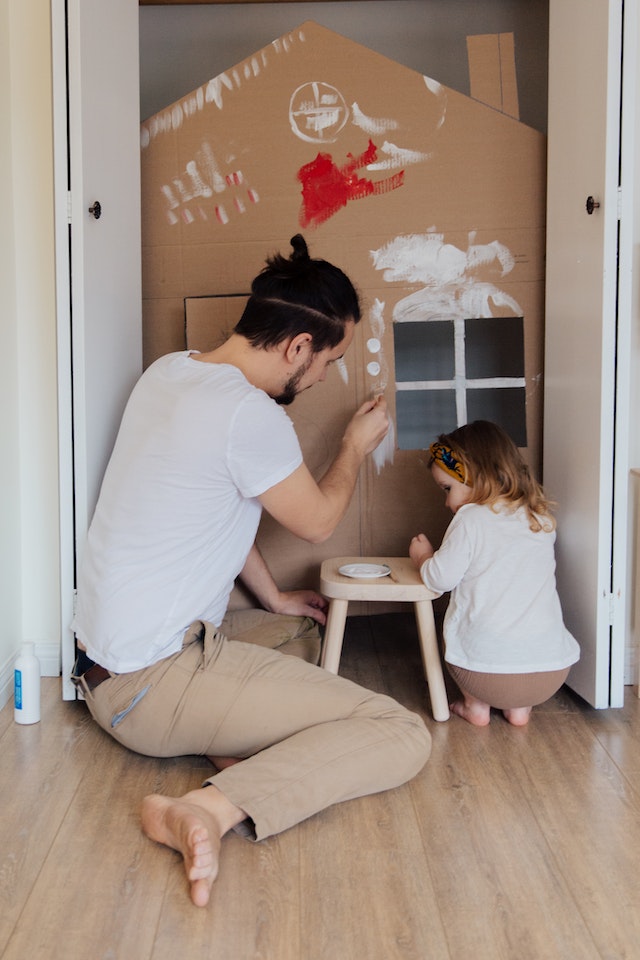What is a Building Envelope and Why Does it Matter?
WHAT IS A BUILDING ENVELOPE?
Here in Canada, we have to think about staying comfortable in our homes during hot summers, frigid winters, and increasingly extreme weather events. But how does that work? How do we protect ourselves from the elements, while maintaining comfortable temperatures and humidity levels inside to make our house a comfortable home? That is the job of the building envelope!
Simply put, the building envelope is a collection of materials that help us control the flow of three things – heat, air, and moisture, and separates our indoor environment from the outdoors.
In the winter, the building envelope helps prevent the transfer of heat from inside our cozy homes to the outdoors. Similarly, during the summer months, the envelope keeps the cooled air inside and protects us from the heat and even humidity outside.
The building envelope is a collection of materials that help us control the flow of three things – heat, air, and moisture, and separates our indoor environment from the outdoors.
The building envelope also plays a key role in a structure’s energy efficiency. Keeping the air you want inside (heated in the winter, cooled air in the summer) is very important to how we use energy – this is where the term ‘climate control’ comes from. If we can manage the flow of heat, air, and moisture effectively, it means less energy is used and less money spent on heating and cooling. A win-win!
The building envelope of a house consists of its foundation, roof, exterior walls, and any windows or doors in those walls. Super insulation all around, high-efficiency windows, and tightly controlled air flow can increase the effectiveness of the envelope and the overall energy efficiency of the building.
Air tightness is one of the most important parts of building envelope. A tightly sealed building allows for less air leaking in and out, which may translate into reduced moisture issues, and more control over our comfort – specifically temperature and humidity. In other words, building design that’s very airtight can prevent energy loss through the building envelope.

WHY IS THE BUILDING ENVELOPE IMPORTANT?
The building envelope plays an important role in how an individual, a community, and our entire country uses energy. Buildings in Canada use a significant amount of energy for heating and cooling, and through the everyday operation of those heating and cooling systems, buildings contribute a lot of greenhouse gas (GHG) emissions to the atmosphere. A tighter and better insulated envelope can conserve energy, keep a house comfortable longer, and reduce the amount of emissions our systems create, simply by being well planned and well built.
Here are just some of the important roles a building envelope plays:
Comfort and Health: A well designed and properly constructed building envelope can contribute to the comfort and health of a home by improving air quality, reducing unwanted drafts, allergens, and managing humidity levels. Unchecked humidity levels could otherwise instigate mould or mildew growth in unseen parts of a home (such as inside walls and ceilings, beneath finished floors). Mould and mildew are unhealthy and need to be prevented.
Durability: The durability of the assemblies in a home is linked to building envelope performance. Moisture that migrates into buildings with leaking air is a leading factor in premature deterioration of building materials. Airtightness layers prevent moisture laden air from passing through exterior walls, floors, ceilings, etc. Smart vapour barriers and retardants limit vapour diffusion through materials between the indoor and outdoor spaces. Continuous and high levels of thermal insulation slow the passage of heat and keep assembly components at warm enough temperatures to prevent condensation on cold surfaces which could lead to moisture build up and degradation.
Energy and Money: A well insulated building envelope also reduces heat transfer through exterior assemblies. We use energy to heat our homes in the winter and cool them in the summer. We’re either burning fossil fuels or wood, or consuming kilowatts of electricity to run heating and cooling appliances. Those fuels and electricity are charged by how much we use. If our building envelope is effective at doing its job, we’ll be using less of those fuels and electricity. So, by limiting how quickly heat can escape (winter) or infiltrate (summer), the building makes better use of the energy we are consuming and paying money for.
Sustainability: The envelope also plays a critical role in energy efficiency, sustainability, and resilience. By keeping heat inside during winter and outside during summer, the envelope helps to minimize the need for heating and cooling. Buildings with a well-insulated envelope can save a significant amount of energy and in turn, reduce your carbon footprint. Sustainability is becoming increasingly important, and the building envelope is more important than ever before.
Acoustics: A building envelope does more than help control the climate of a structure with regard to the comfort of the occupants. Increased insulation levels may also have a positive effect on reducing sound transmission through walls, floors and ceilings. The improved acoustic conditions can allow the people working or living in the building to enjoy quieter conditions, with less noise getting through from the outside. In effect, the building envelope can help you enjoy some peace and quiet.
When you consider all of these factors, the drawbacks associated with a poorly constructed building envelope can create a lot of potential headaches and, in some cases, some serious hazards. Comfort, energy efficiency, and long-term health may all be affected by a badly behaving building envelope. But how do designers and builders make certain that they’re not creating these potential problems? This is where building codes and building science come into play.
THE WHOLE HOME APPROACH
To optimize the building envelope’s performance, we must attend to the whole home as one unified system as well as to the details. It’s important for you and your building professional to understand that the systems in a home affect one another.
The building envelope should be the main focus when trying to improve the quality and performance of a home since a well-insulated and airtight “jacket” decreases the need for expending energy to remain comfortable.
It’s a cost-effective approach to maximize the performance of the building envelope, since it reduces energy loads and provides the opportunity to downsize the heating, cooling, and ventilation equipment. Reduced energy loads can come with cost savings, while downsized equipment comes with the reduced upfront cost of a smaller system, as well as a better performing system in general. Properly sized equipment may run more efficiently, which could lead to homeowners seeing a return on their investment on the building envelope.
A good building envelope can reduce stress and wear and tear on mechanical systems.
WHY THE BUILDING ENVELOPE?
A sound building envelope is critical to the home during Canada’s sometimes intense seasons, as well as our overall comfort in our home. A proper building envelope will help use less energy, which is good for environmental sustainability, and provides building owners the added benefit of energy savings.
A home’s building envelope should strive to protect the occupants of that house from the elements and help to regulate the indoor temperature.
Overall, your home will be better built to stand the test of mother nature and time, making your home more comfortable and resilient in the long run.
Authors: Andy Cockburn and Jillian McArthur, NAIMA Canada

